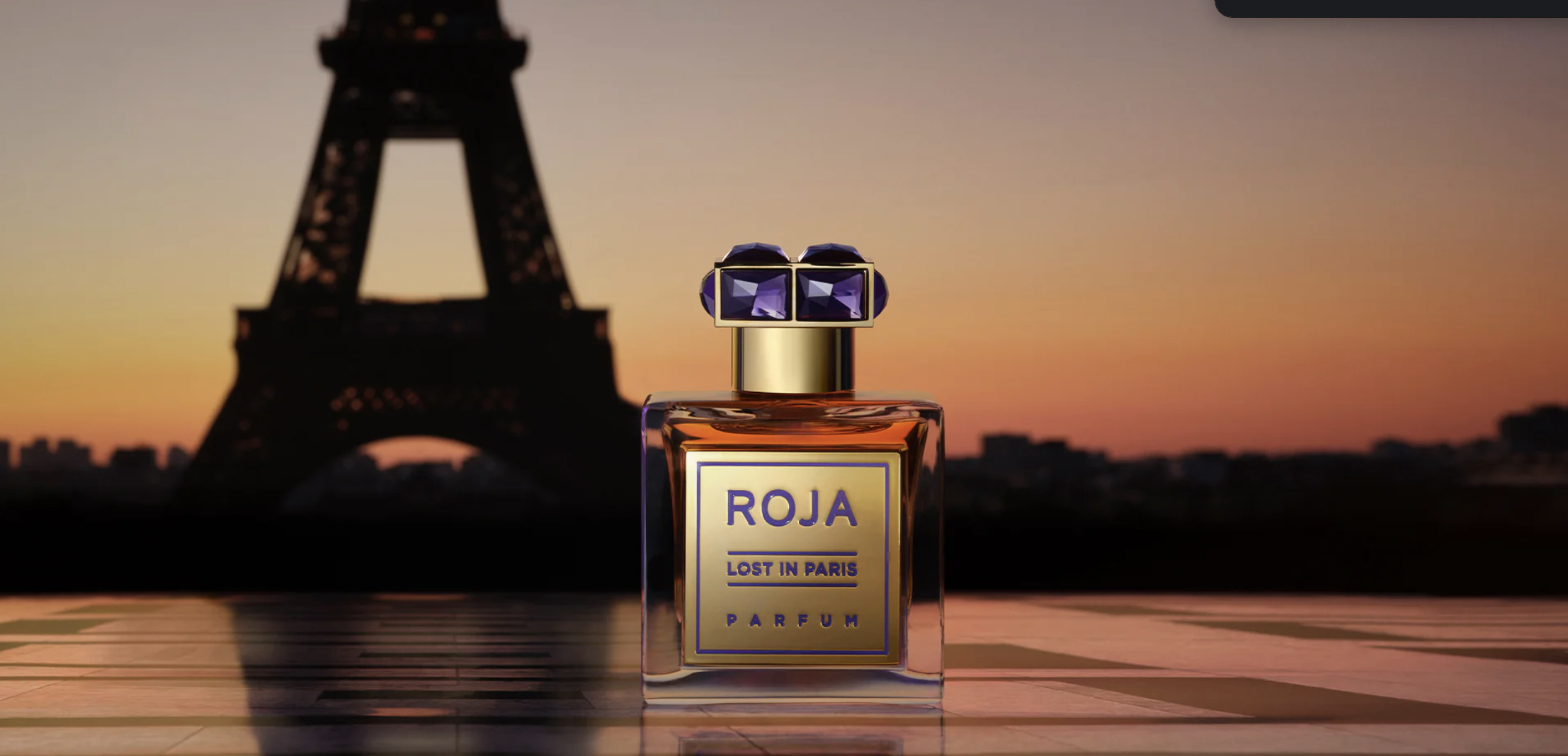Roja Lost in Paris: Where Sweetness Meets Elegance
Written by Kristina Kybartaite-Damule
If you've been following perfume channels on social media lately, it’s been impossible to miss the buzz around Roja’s newest release – Lost in Paris. The brand, which rarely ventures into gourmand territory, has certainly sparked the curiosity of the fragrance community with this launch.
Roja is renowned for its classy, elegant, and timeless creations, each bearing the unmistakable DNA of Roja Dove. The brand's portfolio often leans on fruity, floral compositions, based on oud, amber, or benzoin, with only a handful of fragrances venturing into gourmand territory. And even those only leaned gourmand—they were never overtly edible like many popular sweet fragrances on the market.
One example is Sweetie Aoud, which features a French Patisserie accord. Yet, despite this hint of desserts, the rest of the notes—bergamot, artemisia, rose de Mai, cistus, cardamom, cumin, gurjum, cypriol, patchouli, cedarwood, guaiacwood, aoud wood, juniper, amyris, frankincense, and labdanum—are far from traditionally gourmand. Sweetie Aoud is more of a fantasy of patisserie than an actual patisserie.
Earlier this year, however, Roja released Chou Chou in the Pierre de Velay collection, a true departure from its usual style. This perfume embraced caramel, chocolate, and cotton candy notes, creating a very sweet, quintessential gourmand. I shared my thoughts on Chou Chou in a review here.
Now, Lost in Paris marks another gourmand release in the same year—a surprising move for a brand I’ve been following closely for years. It’s clear that Roja is shifting direction. Recent launches like Elysium Pour Femme and Isola Sol suggest an effort to appeal to a wider, younger audience. Given the ongoing popularity of gourmand fragrances, Lost in Paris seems like a logical step. The brand is also undergoing significant changes: from updated packaging designs (including the removal of Roja Dove’s signature from bottle caps) to the announcement of a new in-house perfumer, Antoine Cotton, who is set to debut his first creations for the brand next year. I’m intrigued to see how the house continues to evolve.
Photo: brand’s website
But let’s return to Lost in Paris. From the moment I saw that purple cap and read the note list, I was curious and eager to try it. However, to be honest, when I finally managed to get a sample, I hoped either to hate it at best or, at the very least, not be impressed. I guess, it's completely normal, knowing that the price of a 100 ml bottle is €1,195. After all, I already have one Roja fragrance (A Goodnight Kiss, currently priced at €1,510 for 100ml) on my wishlist for "someday when I’m a millionaire." I wasn’t keen on adding another dream purchase to that list.
However, the first spray of Lost in Paris quickly shattered my defense. The juicy blend of bitter and blood oranges, with a subtle boozy undertone, immediately brought a smile to my face. It reminded me of the orange gelato I tasted last summer—playful, creamy, and slightly milky, likely thanks to the butter and caramel notes. The opening is sparkling and joyful.
As the perfume develops, hints of orange linger, but the composition takes a more serious turn. Sweet bourbon vanilla anchors the base, complemented by woody and amber notes. Together, they create an elegant, elevated gourmand—breaking away from the stereotype of overly sugary, simplistic, and cheap sweet perfumes.
Once it settles on the skin, the scent gains a spiced warmth, thanks to a generous dose of clove. It even carries a faint Christmas vibe, though this isn’t the aroma of a cozy kitchen at grandma's—it’s the refined scent of a luxurious hotel. From start to finish, Lost in Paris exudes sophistication and an undeniably expensive aura.
In a market saturated with similar-smelling gourmands, Lost in Paris stands out—not just for its quality, but because it simply smells good, yet unique. Wrapping myself in its luxurious sweetness feels indulgent and comforting.
One more thing worth noting: it lasts forever on clothing, which isn’t something I typically associate with Roja fragrances. Catching a trace of it on my sweater the next day was a delightful surprise.
The lingering question is: how much of Paris is in this perfume? To my nose, not much. I don’t get the aroma of Parisian boulangeries, nor the tobacco or coffee scents that I often associate with the city. Perhaps the creamy butter and caramelized sugar nod to Crème Brûlée, but only faintly. For me, Paris has a different scent memory—though it’s been eight years since I visited. When I visit it next year, I will be sure to get lost there, and to soak in the scents around me. Maybe then I will be able to really tell how much of Paris is in this perfume.
[sample purchased, opinion my own]

